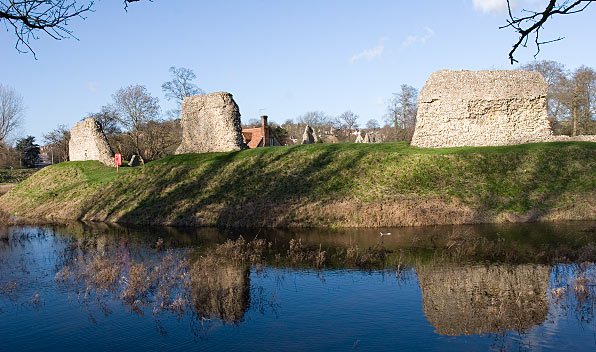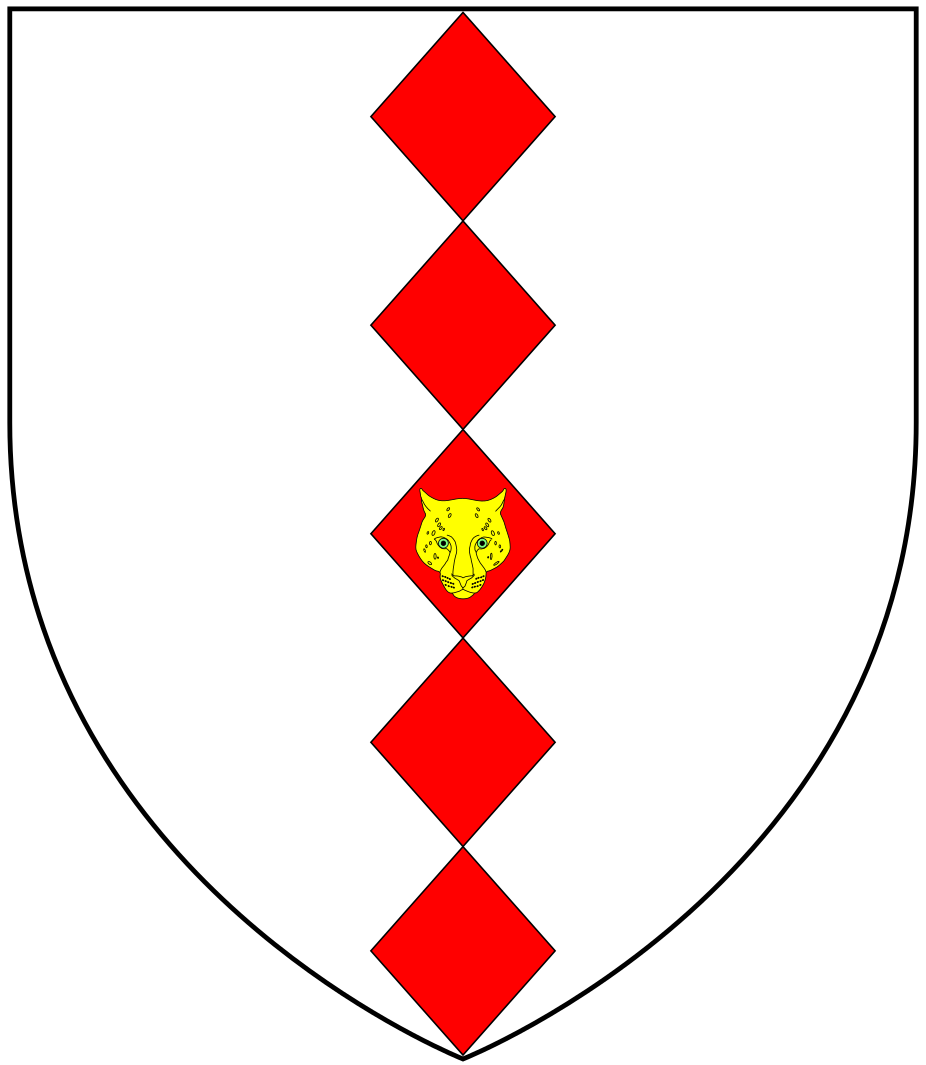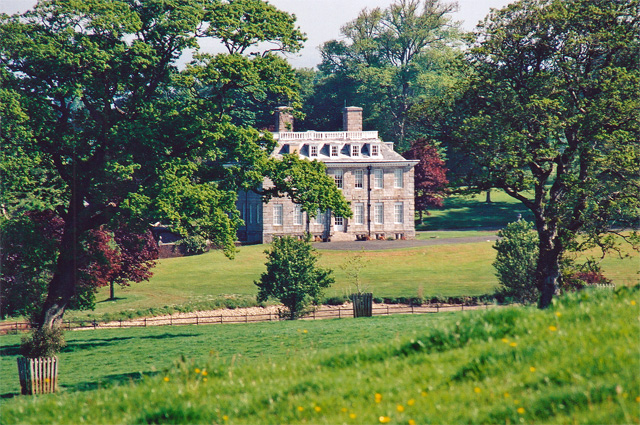|
Manor Of Flete, Holbeton
Flete (anciently Flete Damarell) in the parish of Holbeton in Devon is an historic manor. In 1810 it was called "one of the finest estates in the county of Devon".Risdon, p.387 The present manor house known as Flete House was built in the 19th century incorporating some elements of an earlier Tudor house on the site.Cherry & Pevsner, p.450 Descent Brictwold Before the Norman Conquest of 1066 it was held by the Anglo-Saxon Brictwold. d'Aumale The Domesday Book of 1086 lists ''FLUTES'' as the 11th of the 17 Devonshire holdings of Robert of Aumale ( fl. 1086), one of the Devon Domesday Book tenants-in-chief of King William the Conqueror, who held it in demesne. He was also known as ''d'Amarell, Damarell'', etc., and his name was Latinised to ''de Albemarle'', ''de Albamara'',Risdon, p.191 etc. Thus the manor became known as ''Flete Damarell''. It continued in the Aumale family, called by Risdon, Tristram (died 1640) "A fruitful family in former times", until late in the reig ... [...More Info...] [...Related Items...] OR: [Wikipedia] [Google] [Baidu] |
Holbeton
Holbeton is a civil parish and village located 9 miles south east of Plymouth in the South Hams district of Devon, England. At the 2001 census the parish had a population of 579, down from 850 in 1901. By 2011 it had increased to 619. The southern boundary of the parish lies on the coast (at Bigbury Bay), and it is surrounded clockwise from the west by the parishes of Newton and Noss, Yealmpton, Ermington, Modbury, and on the opposite bank of the ria of the River Erme, Kingston. The village, set back from the wooded shores of the river, is accessed by minor roads south of the A379 road, between the villages of Modbury and Yealmpton. Within the parish, north of the village, is the hamlet of Ford. History To the east of the village is an Iron Age enclosure or hill fort known as Holbury. Historically the parish formed part of Ermington Hundred and it contains several historic estates. Flete House is situated in a large park and was formerly the seat of Baron Mildmay of Flete. T ... [...More Info...] [...Related Items...] OR: [Wikipedia] [Google] [Baidu] |
Hugh Waterton
Sir Hugh Waterton, (born circa 1340 efore 1373– died 2 July 1409) was a trusted servant of the House of Lancaster. Family Waterton's date of birth is not known. Some would have it, he was the second son of William Waterton of Waterton, Lincolnshire, and Elizabeth Newmarch, the daughter of Sir Roger Newmarch of Womersley, Yorkshire, by his wife, Maud.A Hugh Waterton, Esq. is known who was a young man in 1386, knighted by 1398, d.1409, born son of William Waterton by his wife, daughter and heiress of Thomas Methley of Methley, near Wakefield, Yorkshire; He had an elder brother, John Waterton, and was uncle to Robert Waterton, another lifelong Lancastrian servant. Career Waterton served in France in 1373 with John of Gaunt, 1st Duke of Lancaster and became his attorney. By 1375 he had acquired the manor of Eaton Tregoz near Ross-on-Wye in Herefordshire, which by an inquisition taken after his death was found to contain castle buildings and a deer park of 144 acres. [...More Info...] [...Related Items...] OR: [Wikipedia] [Google] [Baidu] |
Sir Thomas Hele, 1st Baronet
Sir Thomas Hele, 1st Baronet ( 1595 to 7 November 1670) was a landowner from Devon and MP on various occasions from 1626 to 1670. A Royalist during the 1642 to 1646 First English Civil War, he raised a regiment of cavalry which served in the West Country and sat in the Oxford Parliament. Heavily fined by the Committee for Compounding with Delinquents, he avoided participation in politics during the Interregnum and after the Stuart Restoration in May 1660 was elected to the Cavalier Parliament. He died at home in Holbeton on 7 November 1670. Personal details Thomas Hele was the second surviving son of Thomas Hele (1568-1624) and Bridget Champernowne, 4th daughter of Sir Henry Champernowne (1538–1570) of Modbury in Devon. He became heir when his father disinherited his eldest son Samwell (1590-1661). In 1629, he married Penelope Jackson (?-1630), who died in childbirth the next year, leaving him a son Thomas Hele (1630–1665). Elizabeth Elwes (?-1646)became his second wi ... [...More Info...] [...Related Items...] OR: [Wikipedia] [Google] [Baidu] |
Holsworthy, Devon
Holsworthy is a market town and civil parish in the Torridge district of Devon, England, some west of Exeter. The River Deer, a tributary of the River Tamar, forms the western boundary of the parish, which includes the village of Brandis Corner. According to the 2011 census the population of Holsworthy was 2,641; it was estimated at 3,287 in 2019. History Toponymy The original meaning of "Holsworthy" is probably "Heald's enclosure". Derived from the Old English personal name "Heald" or "Healda", plus "-worthig", an enclosure, farm or estate. An alternative possibility is from Old English "heald" meaning incline or slope. In 1086 the name was recorded as ''Haldeword'' and as ''Haldeurdi'' (Exon). Other recorded spellings are ''Haldwwurth'' 1228, ''Halleswrthia'' -worth(e) -wordi (late 12th–1291), ''Haldeswrthy'' -wrthi -worth (1277–1389), ''Holdesworthe'' (1308), ''Healdesworthe'' (c. 1320), ''Hyallesworthi'' (1326), and ''Houlsworthy'' (1675). Manorial history Holswort ... [...More Info...] [...Related Items...] OR: [Wikipedia] [Google] [Baidu] |
Sheriff Of Devon
The High Sheriff of Devon is the Queen's representative for the County of Devon, a territory known as his/her bailiwick. Selected from three nominated people, they hold the office for one year. They have judicial, ceremonial and administrative functions and execute High Court Writs. The title was historically "Sheriff of Devon", but changed in 1974 to "High Sheriff of Devon". History The office of Sheriff is the oldest under the Crown. It is over 1000 years old; it was established before the Norman Conquest. It remained first in precedence in the counties, until the reign of Edward VII, when an Order in Council in 1908 gave the Lord-Lieutenant the prime office under the Crown as the Sovereign's personal representative. Under the provisions of the Local Government Act 1972, on 1 April 1974 the office previously known as Sheriff was retitled High Sheriff. The High Sheriff remains the Sovereign's representative in the county for all matters relating to the Judiciary and the mainten ... [...More Info...] [...Related Items...] OR: [Wikipedia] [Google] [Baidu] |
Wembury
Wembury is a village on the south coast of Devon, England, very close to Plymouth Sound. Wembury is located south of Plymouth. Wembury is also the name of the peninsula in which the village is situated. The village lies in the administrative district of the South Hams within the South Devon Area of Outstanding Natural Beauty (AONB). The South West Coast Path goes past the coastal end of the town. The National Trust has taken an active role in maintaining the scenic and historic characteristics of the village and its surrounding area The beach is well known for its surfing and rock pooling. Wembury Marine Centre educates visitors about what they can find in the rockpools and how they can help protect and preserve them. The centre is managed by Devon Wildlife Trust and was refurbished in 2006. Basking sharks can be seen in the summer near the Mewstone. There is also Wembury primary school There are three pubs within the Wembury parish; the Eddystone Inn, Mussell Inn and the Od ... [...More Info...] [...Related Items...] OR: [Wikipedia] [Google] [Baidu] |
Yealmpton
Yealmpton () is a village and civil parish in the English county of Devon. It is located in the South Hams on the A379 Plymouth to Kingsbridge road and is about from Plymouth. Its name derives from the River Yealm that flows through the village. At the 2001 census, it had a population of 1,923, falling to 1,677 at the 2011 census. There is an electoral ward of the same name. The population of this ward in 2011 was 2,049. Yealmpton is home to a 400-year-old stone cottage, where it is said a version of the famous rhyme Old Mother Hubbard was written. It is also the site of Kitley Caves, including the now closed Kitley Show Cave, where green marble was quarried; there is an arch of it in the British Museum. John Pollexfen Bastard (1756–1816) a British Tory politician, landowner and colonel of the East Devonshire Militia, lived at Kitley House, Yealmpton. Parish church The parish church is dedicated to St Bartholomew and was designed by William Butterfield. It dates from 1850, ... [...More Info...] [...Related Items...] OR: [Wikipedia] [Google] [Baidu] |
Exeter (UK Parliament Constituency)
Exeter is a constituency composed of the cathedral city and county town of Devon represented in the House of Commons of the UK Parliament. The constituency has had a history of representatives from 1900 of Conservative, Liberal Party, Independent and Labour representation. History The constituency has been held by Labour since 1997. The Labour Party currently has a majority of over 10,000, suggesting this is a safe seat for the party. Constituency profile The constituency covers the majority of this affluent city, including the University and the Met Office which are significant employers. Boundaries 1918–1950: The County Borough of Exeter. 1950–1974: As prior but with redrawn boundaries. 1974–1983: As prior but with redrawn boundaries. 1983–2010: The City of Exeter. 2010–present: The City of Exeter wards of Alphington, Cowick, Duryard, Exwick, Heavitree, Mincinglake, Newtown, Pennsylvania, Pinhoe, Polsloe, Priory, St David's, St James, St Leonard's, ... [...More Info...] [...Related Items...] OR: [Wikipedia] [Google] [Baidu] |
Member Of Parliament
A member of parliament (MP) is the representative in parliament of the people who live in their electoral district. In many countries with bicameral parliaments, this term refers only to members of the lower house since upper house members often have a different title. The terms congressman/congresswoman or deputy are equivalent terms used in other jurisdictions. The term parliamentarian is also sometimes used for members of parliament, but this may also be used to refer to unelected government officials with specific roles in a parliament and other expert advisers on parliamentary procedure such as the Senate Parliamentarian in the United States. The term is also used to the characteristic of performing the duties of a member of a legislature, for example: "The two party leaders often disagreed on issues, but both were excellent parliamentarians and cooperated to get many good things done." Members of parliament typically form parliamentary groups, sometimes called caucuse ... [...More Info...] [...Related Items...] OR: [Wikipedia] [Google] [Baidu] |
Recorder Of Exeter
The Recorder of Exeter was a recorder, a form of senior judicial officer, usually an experienced barrister, within the jurisdiction of the City of Exeter in Devon. Historically he was usually a member of the Devonshire gentry. The position of recorder of any borough or city carried a great deal of prestige and power of patronage. The recorder was often entrusted by the mayor and corporation to nominate its members of parliament, as was the case with Sir Hugh I Pollard ( fl. 1536, 1545), Recorder of Barnstaple, who in 1545 nominated the two MP's to represent the Borough of Barnstaple. In the 19th century a recorder was the sole judge who presided at a Quarter Sessions of a Borough, a "Court of Record", and was a barrister of at least five years' standing. He fixed the dates of the Quarter Sessions at his own discretion "as long as he holds it once every quarter of a year", or more often if he deemed fit. List of Recorders of Exeter *(1514–1544) (1st term) Sir Thomas Denys (c ... [...More Info...] [...Related Items...] OR: [Wikipedia] [Google] [Baidu] |
Serjeant-at-law
A Serjeant-at-Law (SL), commonly known simply as a Serjeant, was a member of an order of barristers at the English and Irish Bar. The position of Serjeant-at-Law (''servientes ad legem''), or Sergeant-Counter, was centuries old; there are writs dating to 1300 which identify them as descended from figures in France before the Norman Conquest, thus the Serjeants are said to be the oldest formally created order in England. The order rose during the 16th century as a small, elite group of lawyers who took much of the work in the central common law courts. With the creation of Queen's Counsel (or "Queen's Counsel Extraordinary") during the reign of Elizabeth I, the order gradually began to decline, with each monarch opting to create more King's or Queen's Counsel. The Serjeants' exclusive jurisdictions were ended during the 19th century and, with the Judicature Act 1873 coming into force in 1875, it was felt that there was no need to have such figures, and no more were created. The ... [...More Info...] [...Related Items...] OR: [Wikipedia] [Google] [Baidu] |






